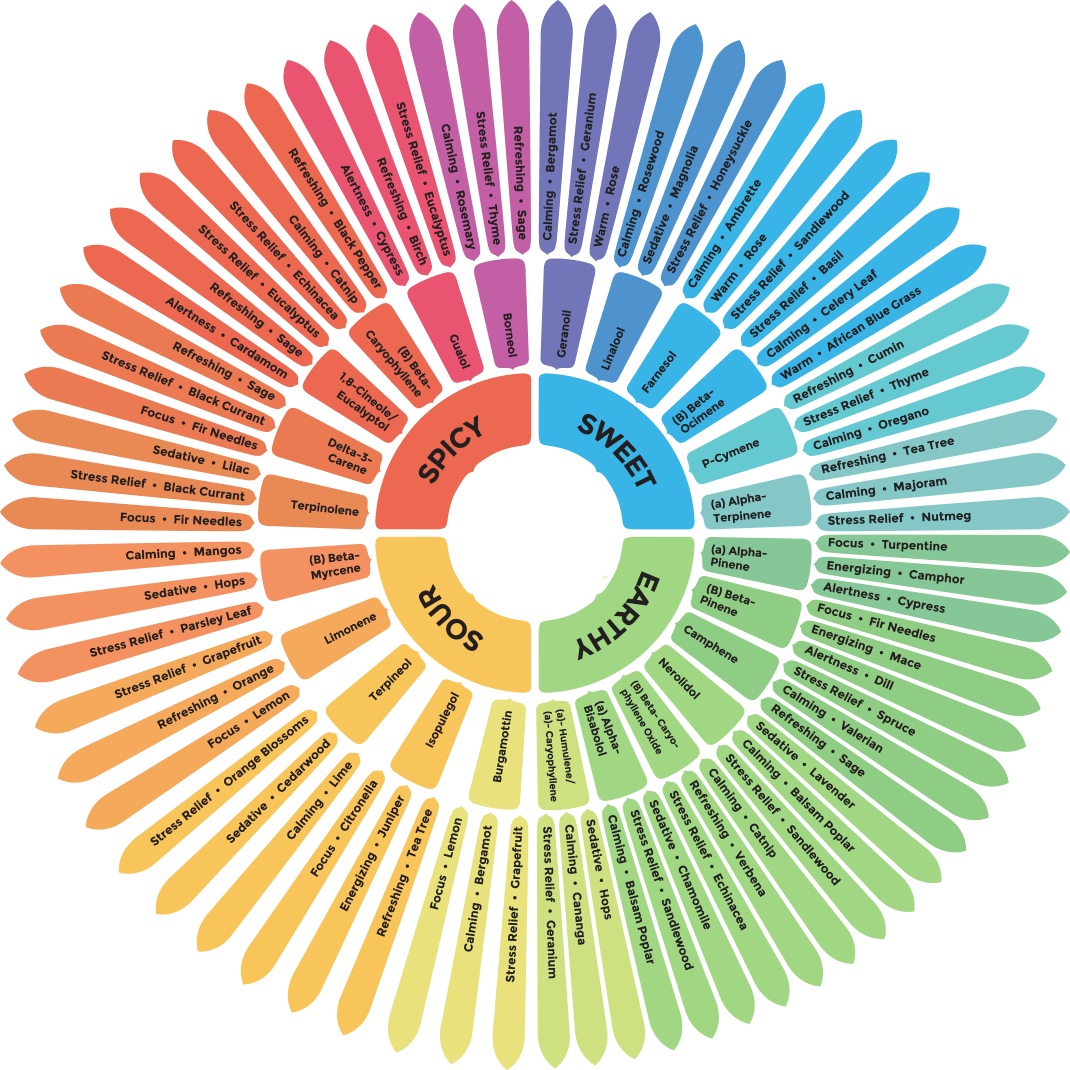Terpenes are naturally occurring chemical compounds found in all plants and some animals. They’re responsible for the unique aromas, flavors, and even colors associated with various types of vegetation.
Terpenes have two (2) very important roles in every plant’s life: to protect the flowers from predators and to produce resin. They are a major part of resin and are heavily used in the production of essential oils, so they are a good fit for medical and beauty products. That is how terpenes made their way into the fragrance industry, as well as conventional and alternative medicine.
They are most commonly used in aromatherapy, but they’re also synthetically made with flavors and aromas as food additives. Organic and completely natural maple syrup contains about 300 terpenes, which makes it so yummy in the first place. Some of the more common sources people encounter include: citrus fruits, aromatic herbs like sage and lavender, and cannabis!


In terms of cannabis, terpenes secreted inside the tiny resin glands of cannabis flowers, known as trichomes, are what make certain strains smell or taste different from others. Terpenes produce a citrusy aroma in some strains, and fruity and sweet notes in others and while some may smell and taste like lavender, others can be more earthy and pungent like cheese. However, it’s not all about the smell. Terpenes also produce and enhance a wide range of medical effects by influencing how we process cannabinoids.

Photo courtesy of THC Design
How Do Terpenes Work With Cannabinoids?
There are more than 200 terpenes found in cannabis. They coexist in the herb and work together with cannabinoids to make the sum of all the parts that lead to the magic or power of cannabis. Russo, E. B. (2011) When terpenes work with cannabinoids like CBD and THC, they form a synergy that creates stronger and better effects than both would achieve on their own.

They interact with our Endocannabinoid System (ECS) and assist cannabinoids in entering the bloodstream, in a process called the Entourage Effect.
- The Myrcene terpene, the most common in cannabis, is known for its relaxing, sedating effects.This terpene has the potential to support falling asleep as well as the reduction of pain, stress, and anxiety.
- The Limonene terpene is responsible for increasing serotonin levels which influences how cannabis affects our mood. That means these terpenes can influence neurotransmitters in our brain which entails that different strains may have different effects on our mood.
This symbiosis between cannabinoids and terpenes is what gives cannabis its special powers, as it improves the absorption of cannabinoids, overcomes bacterial defense mechanisms, and minimizes any side effects.

Photo courtesy of Farmulated
Russo, E. B. (2011). Taming THC: potential cannabis synergy and phytocannabinoid-terpenoid entourage effects. British Journal of Pharmacology, 163(7), 1344-1364. [DOI: 10.1111/j.1476-5381.2011.01238.x]
Booth, J. K., & Bohlmann, J. (2019). Terpenes in Cannabis sativa – From plant genome to humans. Plant Science, 284, 67-72. [DOI: 10.1016/j.plantsci.2019.04.002]


